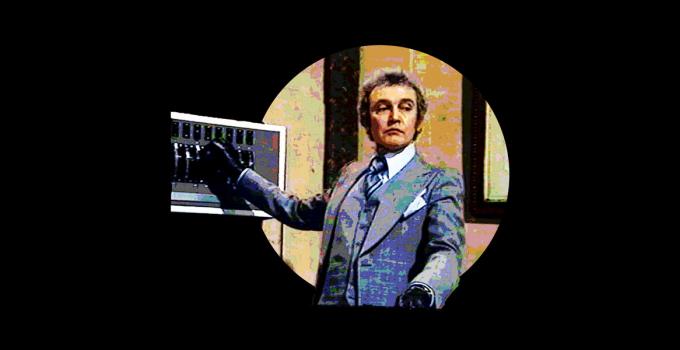Anti-sexist intentions don't cancel cultural ideas of science as masculine
Lindy Orthia and Rachel Morgain
A culture that is overtly anti-sexist can still implicitly associate science with masculinism, according to CPAS academic Lindy Orthia and anthropologist Rachel Morgain.
In a new research paper published in the journal Sex Roles, these researchers analysed scientist characters appearing in the science fiction television show Doctor Who over a 50 year period to understand how scientific credibility was depicted in relation to characters' gender.
Their paper included two kinds of analyses: a quantitative comparison of whether male scientist characters were more likely to be depicted as scientifically credible than female scientist characters, and a qualitative analysis that examined the gendered discourses associated with characters that were depicted as extremely non-credible as scientists.
The quantitative comparison showed that even though Doctor Who has had many more male scientist characters than female scientist characters throughout most of its history, there are no statistically significant differences between the genders' level of scientific credibility. This suggests Doctor Who cast and crew have made a conscious effort to be non-sexist in their depiction of individual scientist characters.
But the qualitative analysis showed that characters whose scientific incompetence was very strong also tended to be feminised in unusual ways. If male, such characters were generally depicted as more feminine than other male characters in their story, and many male and all female incompetent scientists also served social regimes that were either male-rejecting and female dominated, or effeminate, collectivist and pacifist.
Drs Orthia and Morgain argue that this perpetuates and reflects a cultural association of science with masculinity, and poor science with femininity.
"The evidence shows that Doctor Who has always depicted female scientists as more or less equal in ability to male scientists at the individual level," said Dr Orthia. "But the gendered culture of scientific competence depicted by the show suggests that all scientists - women, men or anyone else - are expected to conform to a masculinist culture of science if they want to succeed in it."
Quantifying scientific credibility
The paper quantified scientific credibility by comparing scientist characters on a number of traits that might be seen to signify credibility: whether the character performed scientific work on screen; whether they were addressed by a scientific title such as Professor or Dr, or not; and whether they possessed authority and/or autonomy within their scientific workplace. They were also compared on whether they had a prominent role in their story, and on whether their field of science was medicine, since medical science has always seen a higher proportion of women in western nations such as Britain.
The authors coded 222 scientist characters for these traits - 166 men and 56 women - then compared them statistically, finding no significant differences between the genders for the overall dataset. When comparing within decades they found one significant difference, with male scientist characters from the 1970s more likely than 1970s female scientist characters to possess workplace authority or autonomy. Aside from that, statistically speaking, the genders were depicted as equally credible and competent in all decades of Doctor Who's production (the 1960s (1963-69), the 1970s (1970-79), the 1980s (1980-89), and the 2000s (2005-2013).
The gendered culture of scientific incompetence
The qualitative analysis looked more deeply at all the Doctor Who characters who were depicted as absolutely pathetically hopeless at science. (For those Doctor Who fans reading, they were: the Drahvins from Galaxy Four (1965), Leader Clent and Jane Garrett from The Ice Warriors (1967), the Dulcian scientists Balan, Teel and Kando from The Dominators (1969), Director Winters and her assistant Jellicoe from Robot (1974-75), Harrison Chase from The Seeds of Doom (1976), Adrasta's Engineers fromThe Creature from the Pit (1979), Hardin from The Leisure Hive (1980), Gilbert M from The Happiness Patrol (1989) and Hobbes from Midnight (2008).)
Almost all the male scientist characters in this lot were characterised physically and/or in personality and behaviour as effeminate in some way. For example Harrison Chase is well known as a camp, probably gay character - described by commentator Nyder as 'Mr Humphries with psychotic tendencies' - whosebotanical science is so marginal he composes requiems for his plants.
All female characters and many male characters were also shown to serve a political/social regime that was depicted as questionable by their story. Some of those regimes were male-rejecting and female-led, such as the Drahvins' female-dominated society ("We have a small number of men, as many as we need. The rest we kill. They consume valuable food and fulfill no particular function"), which crafts spaceships out of "inferior metal" and can't even fix a ship when it crash-lands.
Others were depicted as problematically pacifist, collectivist and effeminate, such as that of the bearded-yet-dress-wearing Dulcians who are so pacifist and so unable to detect a massive anomaly in their planet's radiation level that they almost let the hyper-masculine Dominators blow up their planet, until the Doctor sets them straight.
Innovative research method
The researchers believe that their paper takes research on gender and science in popular fiction to a new level.
"There has been a lot of research analysing depictions of female scientists in movies or television fiction, and a lot of headcounts showing women are vastly outnumbered by men in fictional scientific workplaces," said Dr Orthia. "But only one other study has performed a quantitative comparison between the genders on specific traits, beyond a mere headcount, and none have combined a quantitative comparison with a qualitative analysis of the culture of gender and science."
"In bringing these approaches together in a mixed-methods analysis, we have been able to reveal some of the complexities of gender and science - in this case, that overt intentions of non-sexist characterisation can be undermined by cultural beliefs about the masculine nature of scientific labour."

